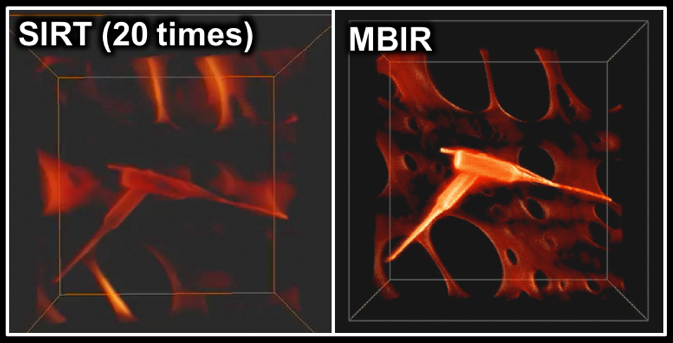Nanoscale Scanning Transmission Electron Microscopy Tomography
Three-dimensional (3D) characterization at nanoscale is one of the most crucial technique, because functional and engineered materials have complex 3D nanostructures and their properties are strongly dependent on 3D morphologies.
Electron tomography is a technique in which 3D volume is reconstructed from a series of projected images (i.e., tilt series) with many different directions. To reconstruct 3D volume, a tilt series should satisfy the projection requirement, which says that projected intensity of an object must be a monotonic function of some properties of the object, such as mass and thickness. Since parallel beam bright-field TEM mode can’t satisfy the projection requirements for crystalline samples due to the strong Bragg diffraction, HAADF-STEM imaging is used to collect tilt series from crystalline materials science specimens. An example of ADF-STEM tilt-series shown in Movie 1.
HAADF-STEM tilt series collection is followed by a mathematical reconstruction process. Reconstruction algorithm is important because the quality of reconstructed tomogram is strongly dependent on a choice of reconstruction algorithm. Since tilt-series collection is limited to a certain angular tilt range due to the limited space between objective pole-piece gap, the missing wedge artifact in reconstruction is inevitable. Therefore, a novel reconstruction algorithm which can reduce the missing wedge artifact is highly favorable.
Conventionally, weighted back projection (WBP) and simultaneous iterative reconstruction technique (SIRT) have been widely used in electron tomography field but the VORTEX group is not using those algorithm but we adopt a Model Based Iterative Reconstruction (MBIR) algorithm, which provides much improved signal to noise ratio (SNR) and reduced missing wedge artifacts. 3D tomogram reconstructed by MBIR is shown in Movie 2. Also, comparison of reconstruction quality between SIRT and MBIR is available in Figure 1.

